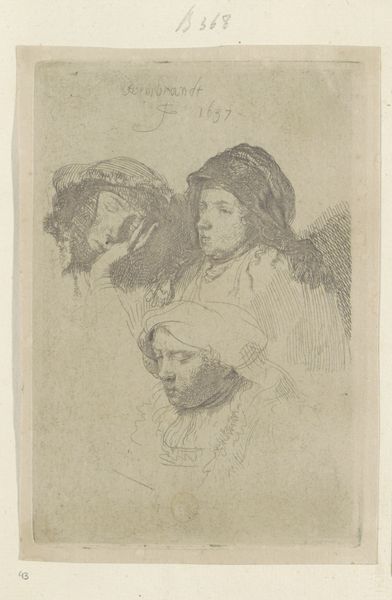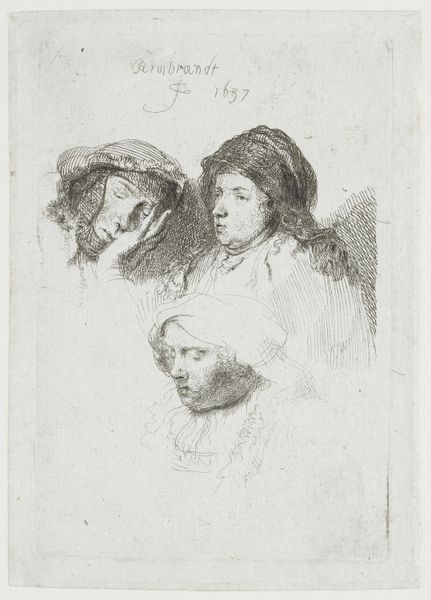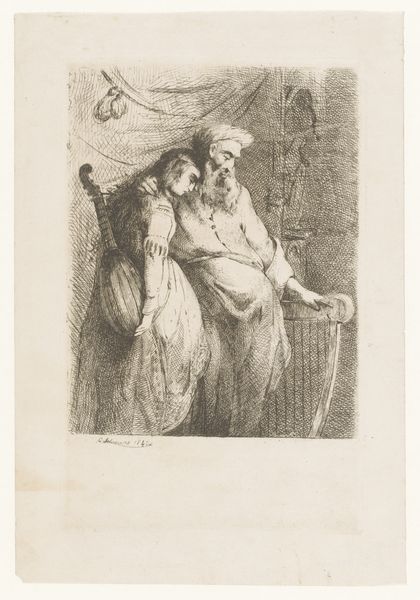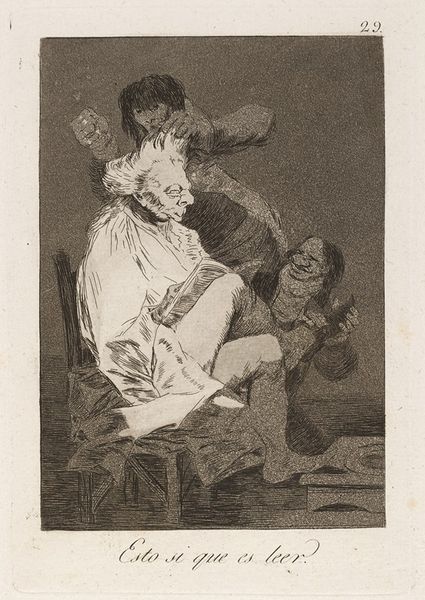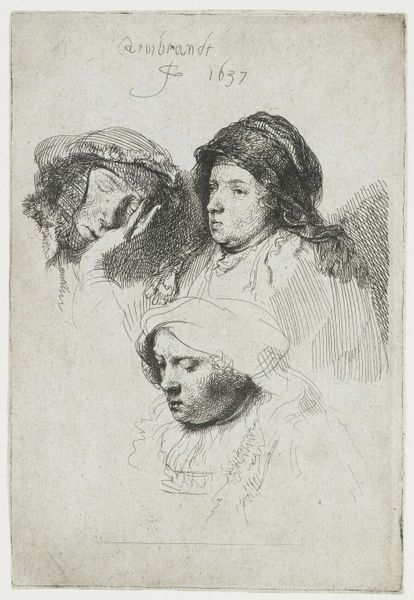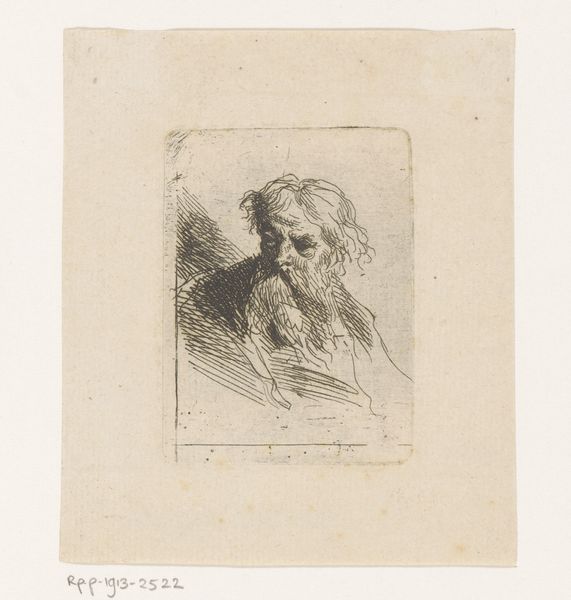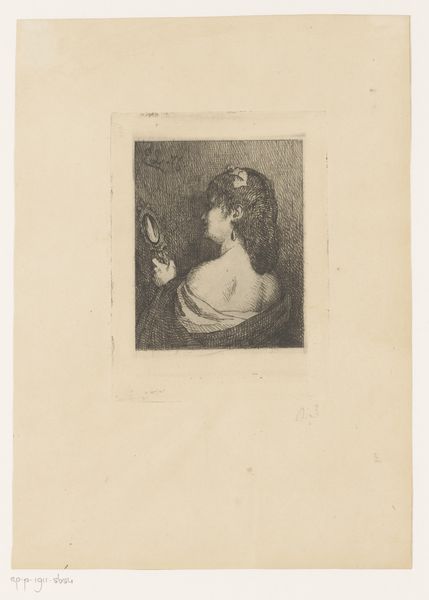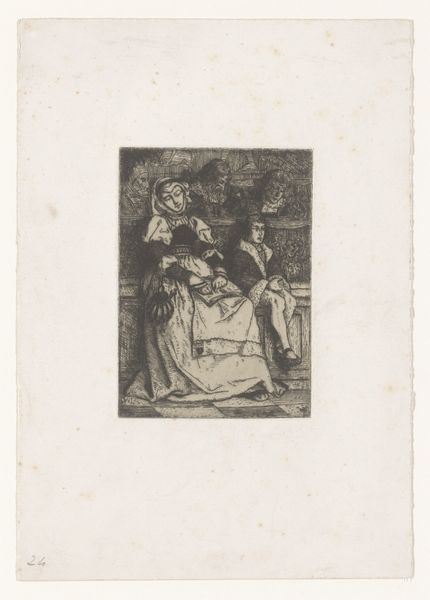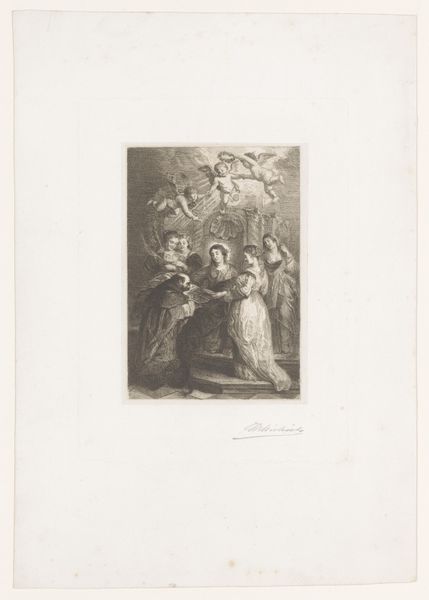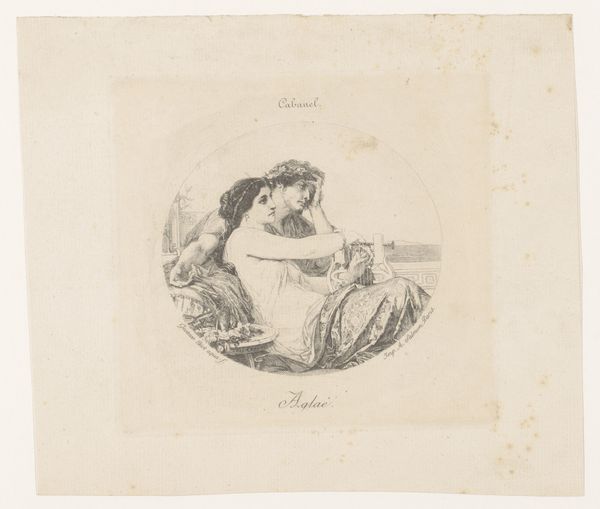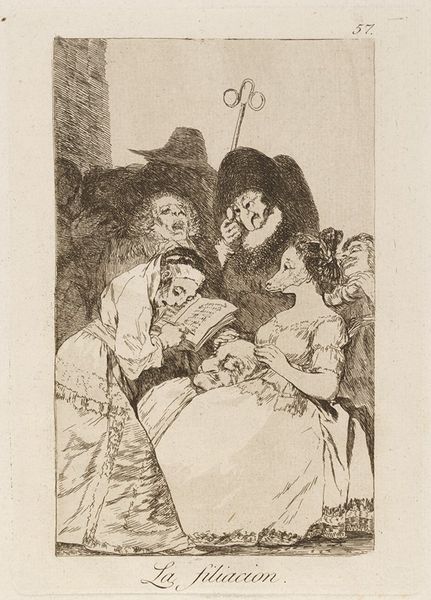
Dimensions: height 140 mm, width 95 mm
Copyright: Rijks Museum: Open Domain
This print, Three Heads of Women, was made by Rembrandt van Rijn in 1637. He used a metal plate, likely copper, and a technique called etching. This involved coating the plate with a waxy, acid-resistant substance, then drawing into it with a needle to expose the metal. The plate would then be immersed in acid, which bites into the exposed lines, creating grooves that hold ink. See how the varying depths of the etched lines create different tones and textures, from delicate facial features to the darker shadows of the women's clothing? This requires masterful control. Rembrandt was a real virtuoso of etching. What is really interesting is the social context of printmaking. Unlike painting, prints can be reproduced and disseminated widely, making art more accessible and affordable to a broader audience. Rembrandt used this medium to explore everyday life, capturing intimate glimpses of ordinary people. He elevated these subjects, traditionally considered outside the realm of "high art," by showcasing his extraordinary skill. Ultimately, this print invites us to consider the labor involved in both its creation and its subject matter, challenging conventional distinctions between art and craft.
Comments
No comments
Be the first to comment and join the conversation on the ultimate creative platform.

